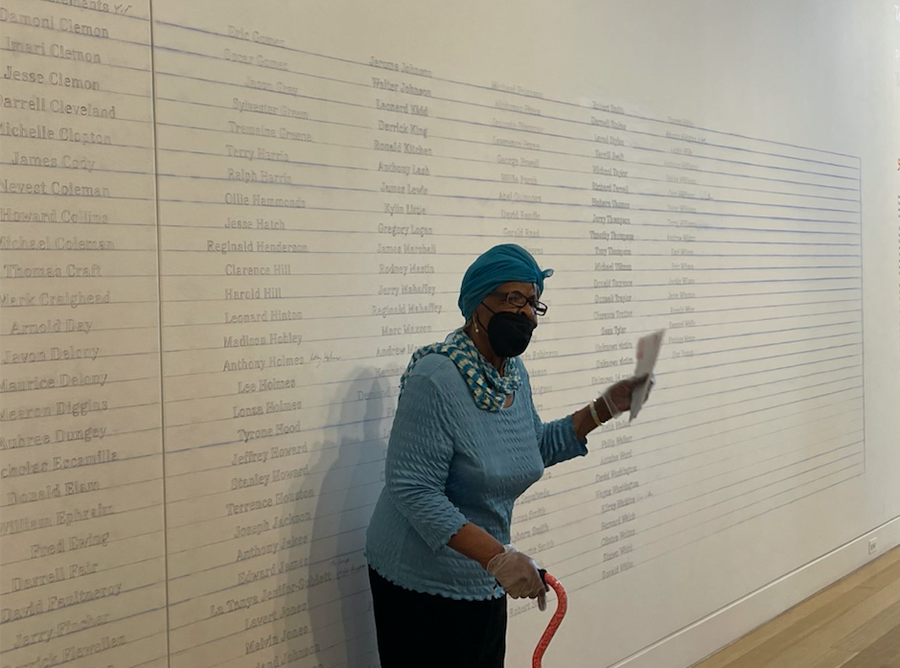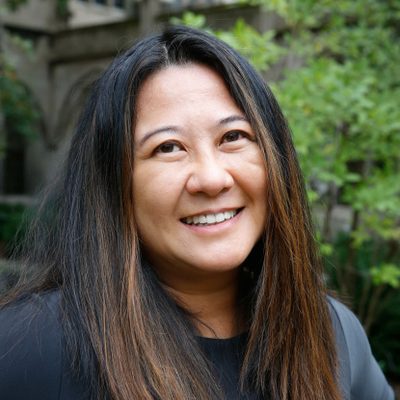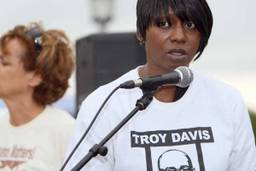An extended version of this essay appears in Remaking the Exceptional: Tea, Torture, and Reparations | Chicago to Guantánamo (eds. A. Ginsburg, A. Hughes, A. Hussain, and A. Petty) published by DePaul Art Museum in July 2022. For more information please visit artmuseum.depaul.edu
The first time I visited Ronnie Kitchen on death row at Pontiac Correctional Center, I drove down with his mother, Louva Grace Bell. Ronnie was one of the cofounders of the Death Row Ten, a group of Black men, all of whom had been tortured by former Chicago Police Department Commander Jon Burge and white detectives under his command, and all of whom had been convicted and sentenced to death on the basis of tortured confessions. When they came together in 1998, the Death Row Ten enlisted the Campaign to End the Death Penalty (CEDP) to be their voice on the outside and together forged a visible grassroots campaign that interrupted Illinois’s death machine and led to the exoneration or release of six of their members. The intrepid mothers of the men on death row became a critical force within the death penalty abolition movement in Illinois — they were essential organizers and teachers.
Louva was one of the pioneering mothers, along with Costella Cannon and Jeanette Johnson, who helped their sons organize the Death Row Ten campaign. JoAnn Patterson was another trailblazer in Chicago’s anti-death penalty movement. She worked with her son, who was also tortured by Burge and sentenced to death, to form the Aaron Patterson Defense Committee, arguably the first prisoner defense committee to gain public attention since the Pontiac 17 were charged with inciting a riot at Pontiac Correctional Center on July 22, 1978. Mary L. Johnson, whose son Michael had escaped the death penalty but was serving a life sentence, was one of the first people to file a complaint against Burge. An outspoken activist and leader of the police watchdog group Citizens Alert, she was also a fierce warrior in the anti-death penalty movement. As an organizer with CEDP, I worked closely with the Death Row Ten mothers, who were so different and yet so similar to my Korean mother, and they became dear to me as we attended chapter meetings, made signs with pictures of their sons that the mothers carried around with them, went to protests, had meals together, traveled to demonstrations (sometimes across the country) and visited their sons on death row.
Uncovering and surfacing their central role in the movement is crucial to understanding the on-the-ground forces that ultimately led to the abolition of the death penalty in Illinois. CEDP embraced an inside-outside organizing strategy in which we saw ourselves as co-strugglers who fought alongside people on death row. This meant that I was in frequent communication with Ronnie. We talked by phone every week and wrote to each other regularly, and I tried to visit once a month, so I became particularly close to his mother. When I met Louva, she was working two jobs as a home healthcare aid and lived in a small apartment on 87th Street. We got to know each other as we raced around the city and on the two-and-a-half-hour drive to and from the prison. On our first visit to Pontiac together, I learned a crucial lesson — one that has stayed with me all these years — about love and sacrifice, and creating the bonds of chosen family across the prison wall.
When we got to the visitor’s center, a misleading name since it was essentially a security checkpoint run by prison officers, I told the officer we were there to visit Ronald Kitchen and gave his prison number, B09130. I was surprised when Louva quickly said that she would be visiting Renaldo Hudson instead. Since Ronnie was getting a visit from me, she explained, she would call out Renaldo because he did not get many visits. Louva had become a surrogate mother to Renaldo after she started visiting him years back when Ronnie was getting a lot of visits from family.
“She was a mother who was hurting from a deep wound, knowing her son was innocent,” Renaldo told me. “She was fighting for her innocent son, and she chose to love a guilty one.” He said that the love Louva had for him is one of the reasons he was able to stay sane. While he was missing love from his biological family, he got it from his surrogate family.
There was a saying among the mothers: “We’re there for every mother’s son.” For Louva, that meant “adopting” Renaldo as her son. For Mary L., it meant visiting death row at Pontiac and Menard, the two Illinois prisons with condemned units, multiple times a year, in addition to going to see her son, who was serving a life sentence. Walking the galleries of death row talking to the men through the bars in their cells, Mary L. said, “When they saw me, they said I reminded them of the mother they hadn’t seen in years. I remind them of the sister they left behind.” Mary L.’s actions are a reminder that everyone behind bars is someone’s child who we can choose to embrace and see fully in all their humanity, not one-dimensionally.
Discussing the dangers of a single story, writer Chimamanda Ngozi Adichie said, “The consequence of the single story is that it robs people of dignity. It makes our recognition of our equal humanity difficult and it emphasizes that we are different rather than how we are similar.” The mothers rejected the single story that was being told about their sons and used their voices to put a human face on the death penalty, at a time when an execution was taking place every week somewhere in the nation, and the majority of Americans supported the death penalty.
Wherever they went, the mothers told their sons’ stories, reclaiming their dignity and their sons’. Louva described how the police had arrested Ronnie when he was on the way to the store to buy cookie dough for his son, how they beat him with a telephone book, forcing him to confess to something he did not do. She would also talk about how playful and charming her son could be. This was so true — even on death row, his smile could make you forget you were visiting him in one of the most sterile, inhumane places on the planet.
Even as the carceral system extends its reach into our everyday lives through surveillance cameras on our blocks and police on our campuses and in our schools, it is easy to think of prisons, and those caged in them, as disconnected from our own lives, as Angela Davis wrote, “This is even true for some of us, women as well as men, who have already experienced imprisonment.” Consequently, we think about imprisonment as a fate reserved for others. This othering is one of the ideological impacts of mass incarceration.
bell hooks described the margins as a space of radical openness where “resistance is continually formed in that segregated culture of opposition that is our critical response to domination.” While “we come to this space through suffering and pain, through struggle,” hooks asserted that “we are transformed individually, collectively, as we make radical creative space which affirms and sustains our subjectivity.” The Death Row Ten and the mothers of the movement transformed the prison into a site of radical possibility and resistance.
The mothers stood by their sons and one another’s sons in the face of a hostile and racist legal system where they and their children were considered disposable. They pushed back against the tough-on-crime hysteria that dominated national politics and created the conditions that allowed Burge and his officers to torture Black people in their custody with impunity. And they pushed back against a death penalty system that was intent on legally lynching their sons. They testified before the Illinois legislature, marched on Washington, D.C., and in the streets of Chicago, visited death row with Rev. Jesse Jackson Sr. and the Rainbow PUSH Coalition — and did the mundane organizing of making phone calls and stuffing envelopes.
Their activism laid the groundwork for a critical meeting with then-Gov. George Ryan at a pivotal political moment prior to his decision to issue blanket commutations of Illinois’s death sentences in 2003. In the fall of 2002, a yearlong campaign urging the governor to issue commutations before he left office, which had been gaining traction, was met by an intense backlash in the media. Working with local anti-death penalty groups, they sought a meeting with the governor, too. When Ryan announced his decision to issue blanket commutations, he noted the meeting “with a group of people who are less often heard from, and who are not as popular with the media.”
As the primary lifelines for their sons, the mothers bore the brunt of the hardships that came with having a loved one condemned to death by the state. The stigma and isolation they experienced because their child had been convicted and sentenced to death were intense. Their strength and compassion — alongside their pain — were palpable to me. Black mothers have often been praised for their resilience, but for me, while it is important to acknowledge the resilience of the mothers as they steadfastly resisted the state, it is equally important not to gloss over the trauma that they experienced. While the mothers endured and showed incredible tenacity, they suffered immeasurably, too.
The mothers found strength in one another and the community of activists they helped to create. As mothers of the movement, they were powerful truth tellers, strategic organizers, and critical thinkers with deep reservoirs of knowledge about the criminalization of Black communities and the violence of the state. These undaunted mothers built a culture of meaningful solidarity in the anti-torture and anti-death penalty movements. Their connection and entanglements with one another and one another’s sons — their involvement and relationships with one another and their unwanted but courageous adventure together — became an instrument of refusal and resistance that inspired a movement and built a beloved community.
Alice Kim is the director of human rights practice at the University of Chicago’s Pozen Center for Human Rights, teaches at a maximum security prison with the Prison+Neighborhood Arts Project, and is a co-founder of Chicago Torture Justice Memorials. She is co-editor of The Long Term: Resisting Life Sentences, Working Toward Freedom (Haymarket Books).









